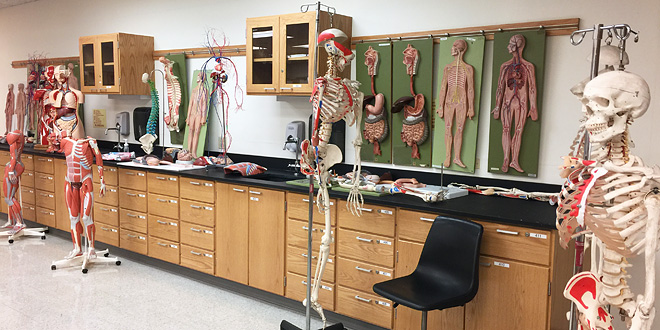
People often ask: “Have you ever considered drawing from cadavers?” This occurred most often during my residency at the International Museum of Surgical Science. My disinterest shouldn’t come as a surprise. My attention to medical illustration stems from a concern with how we relate to and think of bodies, not an interest in biology or illustrating. Despite my clarifications, people continued to insist that drawing cadavers would be a worthwhile experience.
My frustration with the recurring question caused me to eventually develop an interest in drawing cadavers but for all the wrong reasons. I became motivated by the absurd question: How do I know I’m disinterested if I’ve never actually done it?? Anthropology books often describe cadavers in poetic, ornate ways. I’ve heard stories of medical students who faint in cadaver labs… Indeed, all of this intrigued me, but I couldn’t make “finding a cadaver” a priority.
On the other hand, life drawing is one of my favorite activities. The human figure does not enter my work very often, but I still go to open life drawing sessions at least once a month. I also teach it; I love working with models and developing interesting challenges for students.
Somewhere along the way I decided to enroll in an anatomy class in order to teach figure drawing more effectively. The goal with observational drawing is to learn how to translate what one “sees” rather than what one “knows,” i.e. seeing the body is enough. However, knowing how things are connected can sometimes be helpful, especially when it comes to capturing the balance and gait of a specific posture. I remembered that the college where I teach would subsidize a certain number of classes per semester, so in January I signed up for two classes: Conversational French II and Anatomy and Physiology I—a course designed for pre-med and nursing students. The class had both a lecture and lab component. More specifically: a cadaver lab.
We met weekly on Saturdays all day. We didn’t get into muscles until about the sixth week, so I patiently waited in anticipation while learning about bones and other structures that didn’t require dissection. I already had a classroom skeleton at home that I received from IMSS several years ago in exchange for an antique drafting table (long story). We covered a lot of material in a relatively short period of time. The instructor was very clear and thorough, with an amazing ability to pace each lecture. Every second mattered. I purchased a large sketchbook, dug up my watercolor pencils, and found a brush with a built-in water reservoir in the handle, eliminating the need to deal with cups of water. I was ready.
Most of my sketches were completed in under a minute. They functioned as learning devices during class lectures. I found it easier to remember things by drawing them. This included sketching both the slides and plastic models, and later cadavers. The most fascinating aspect of medicine to me was the social: personification, metaphors, memorization aids… I’ve been reading Donna Haraway who often uses humor when dealing with gender bias in science, so I couldn’t help but imagine a mid-20th Century classroom of anatomy students chuckling at the mnemonic devices, many of which are heavily gender-biased and offensive:
“A Lady between two Majors”
“Tom, Dick, and Harry”
“Oh, Oh, Oh, To Touch And Feel Very Good Velvet, Such Heaven!” (I found the original version online: “O, O, O, To Touch And Feel a Virgin Girl’s Vagina, Such Heaven!”)
“Some Say Marry Money, But My Brother Says Big Breasts Brains Matter More.”
“Robert Taylor Drinks Cold Beer” or the alternative “Read The Damn Cadaver Book”
We finally unwrapped our first cadaver—one of four bodies stored in coffin-size stainless steel boxes. The smell was not any worse than that of a permanent marker. I thought I would feel moved, but I only felt a little sad at the unsightly gracelessness of the body. I was also curious regarding the individual and how they lived. None of this information was available to us, of course, and we weren’t allowed to take pictures—but I searched impulsively for clues: fingernails, muscle tone, anomalies.
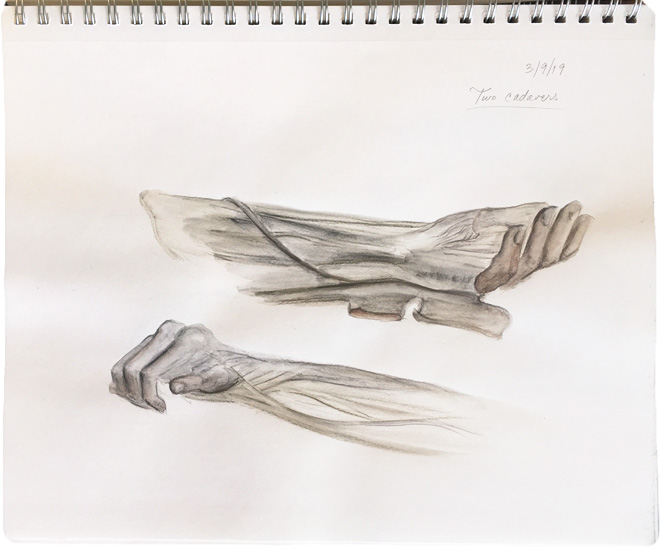
I didn’t spend a lot of time drawing; the cadavers were usually obscured and constantly repositioned. Students with disposable gloves and clipboards swarmed the bodies anxiously, whispering Latin names or moving their lips in silence as they touched and turned each part. Occasionally, I would get a drawing in. One time I drew a hand that had been handled by students; they had tugged and pulled on each tendon in order to learn how fingers work. While drawing, I realized that the hand slowly relaxed back into place. I thought lifelessness would eliminate this problem! Momentarily, the thought of using a pinhole camera to record a long exposure excited me much more than drawing.
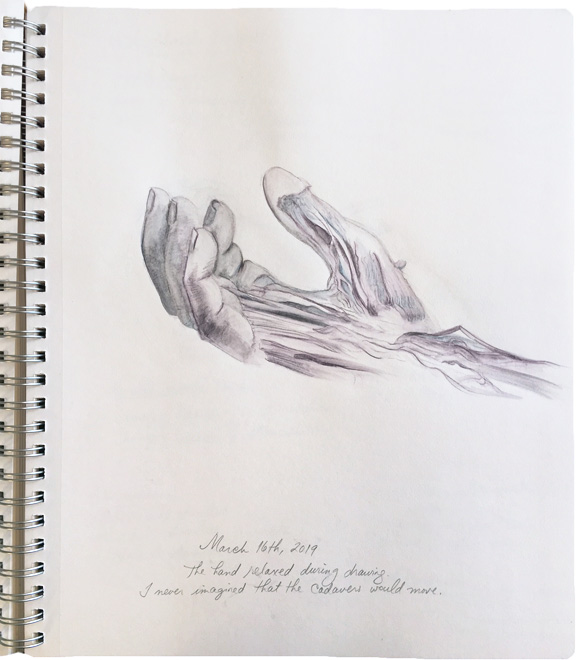
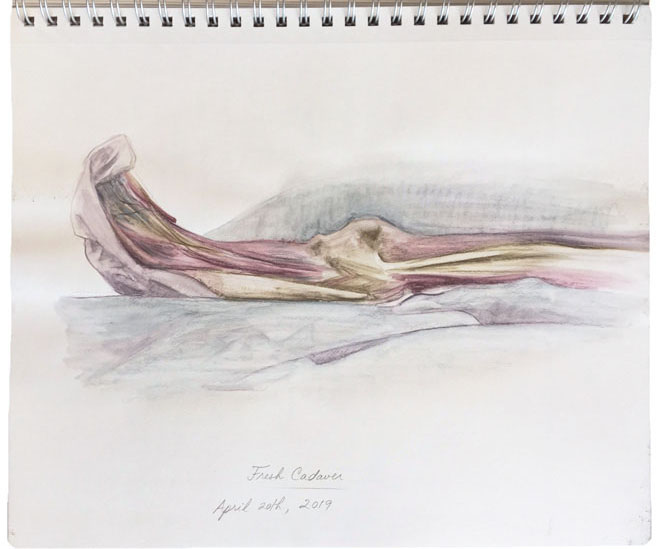
Most of my drawings were uninteresting. I’m not going to post many of them here. I tried a few different approaches: isolating parts, foreshortening, using more or less watercolor, cross-hatching, changing the colors… Near the end of the semester, I began experimenting with the little number tags on muscles. The drawings resembled highways. This direction may have had some potential.
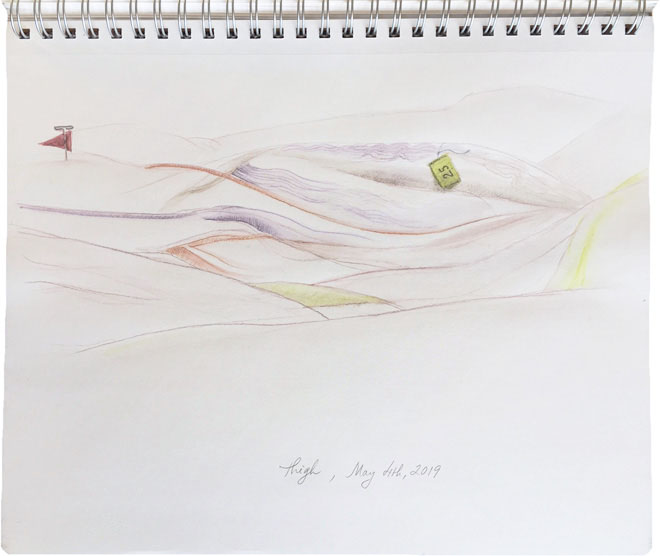
All in all, the challenge felt very similar to drawing a bowl of fruit: How does one make it interesting? I love to draw anything, and this was about as fun as drawing anything. I had my answer: I am not interested in cadavers. Here I should mention that there was one drawing I really did love. It was a sketch of the lab, the instructor standing in the background, students in winter coats with laptops, plastic leg models scattered about.
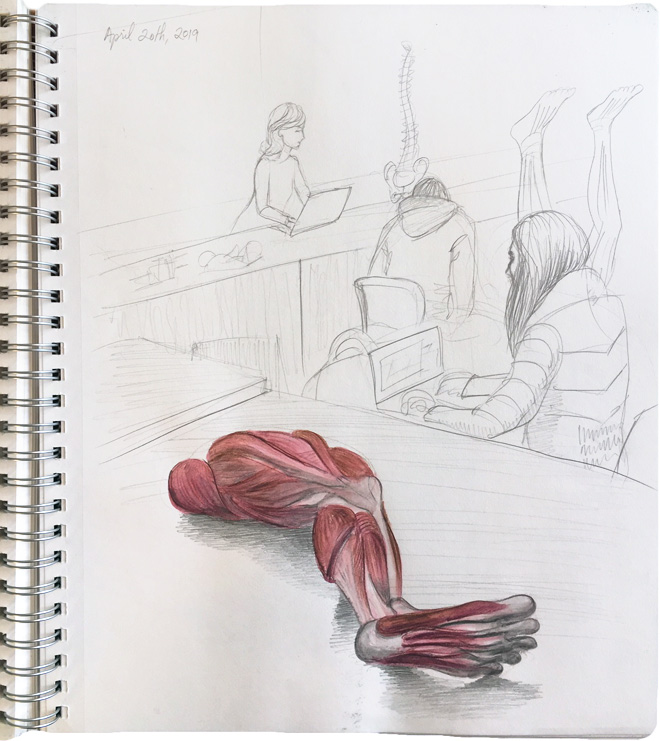
This was an extraordinary semester. The class taught me a lot—not just about anatomy, but about classroom culture and my own proclivities, sensibilities, doubts. I am so grateful that the instructor was not only okay with but also happy to see me draw. She offered to let me come back anytime. I haven’t completely given up on the idea.
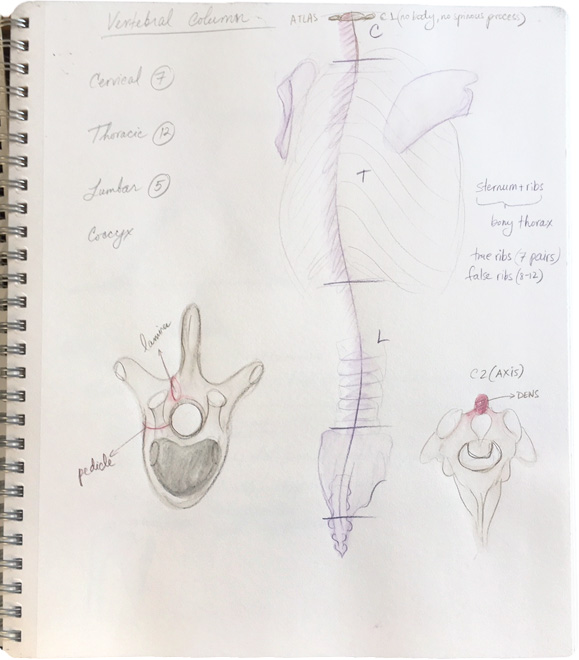
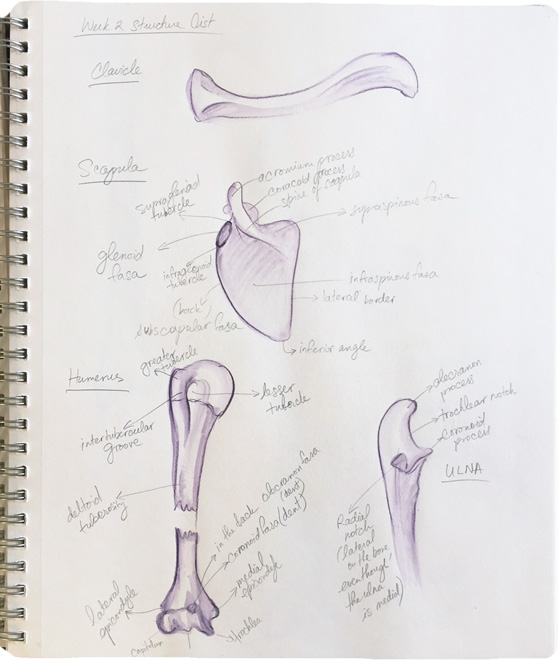
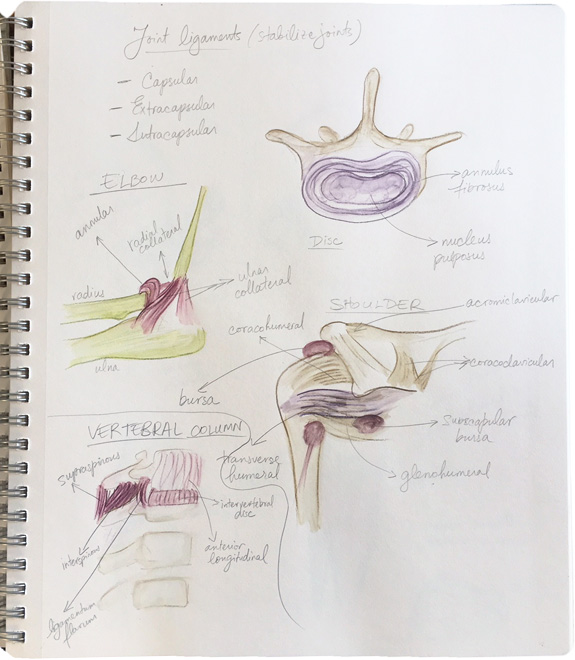
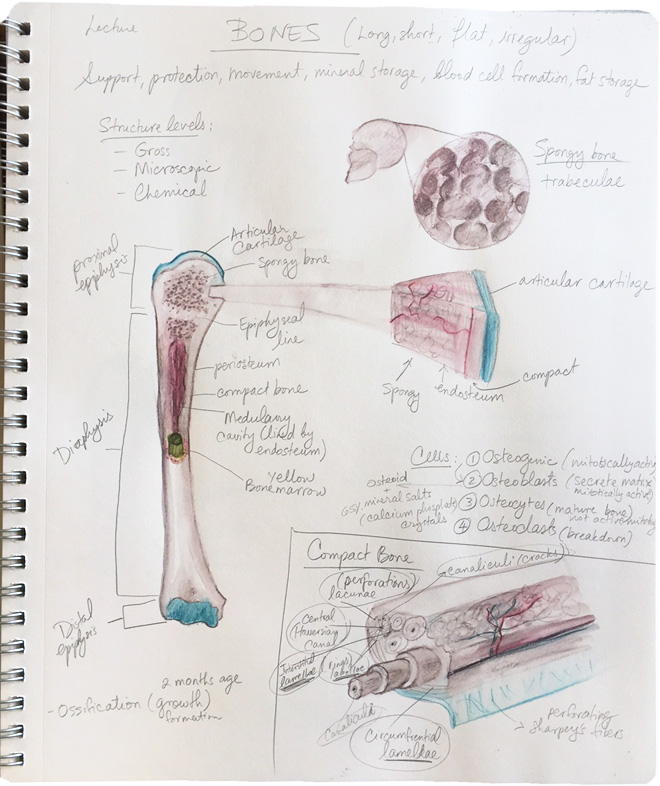
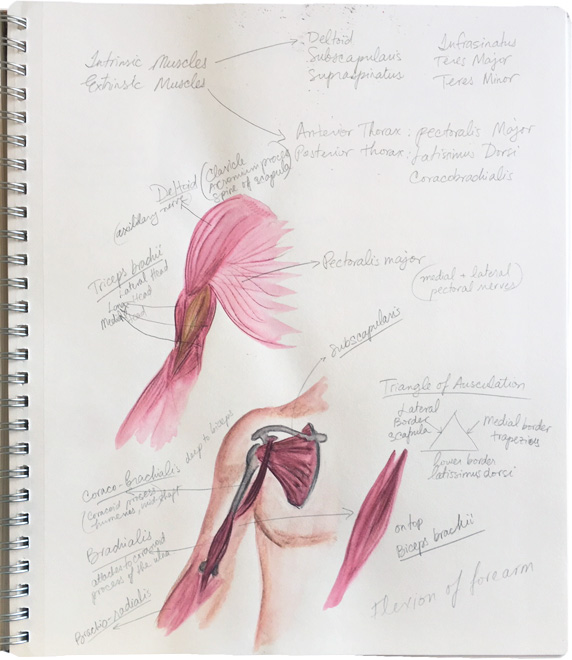
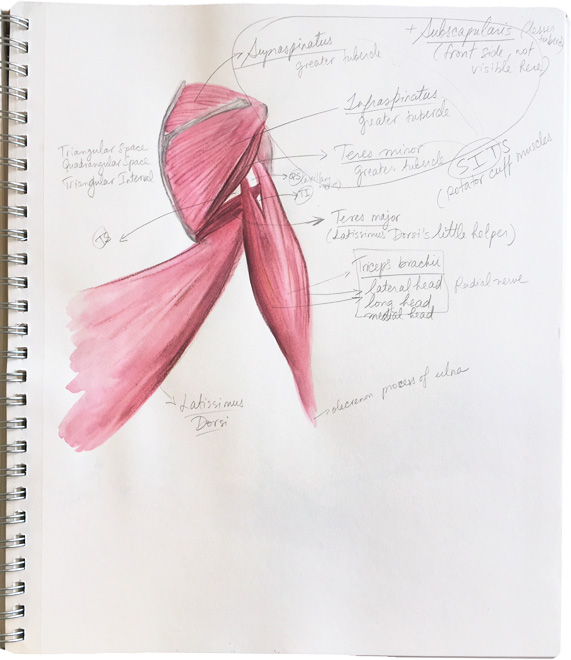
Cadavers as “companion species”?
A
CyborgCadaver Manifesto?